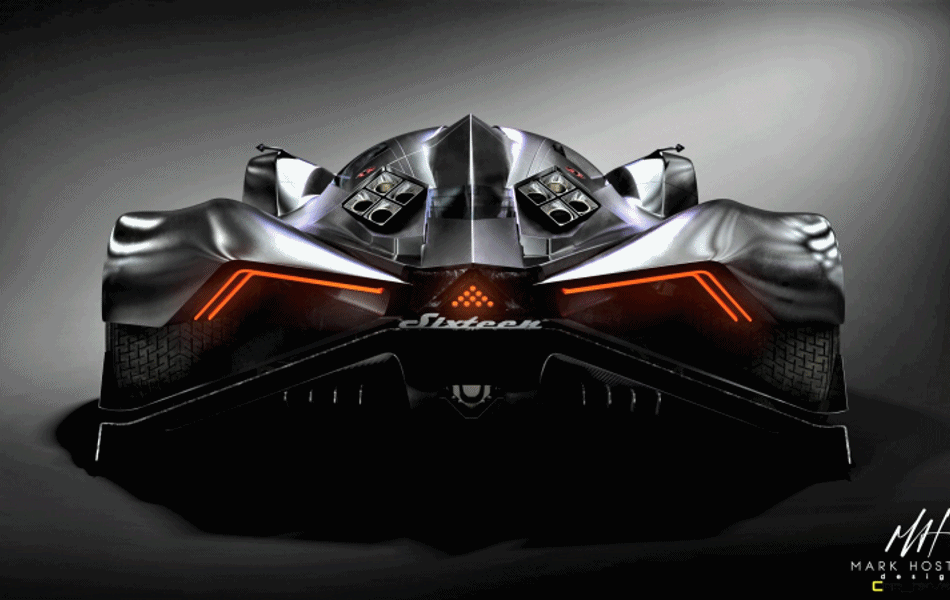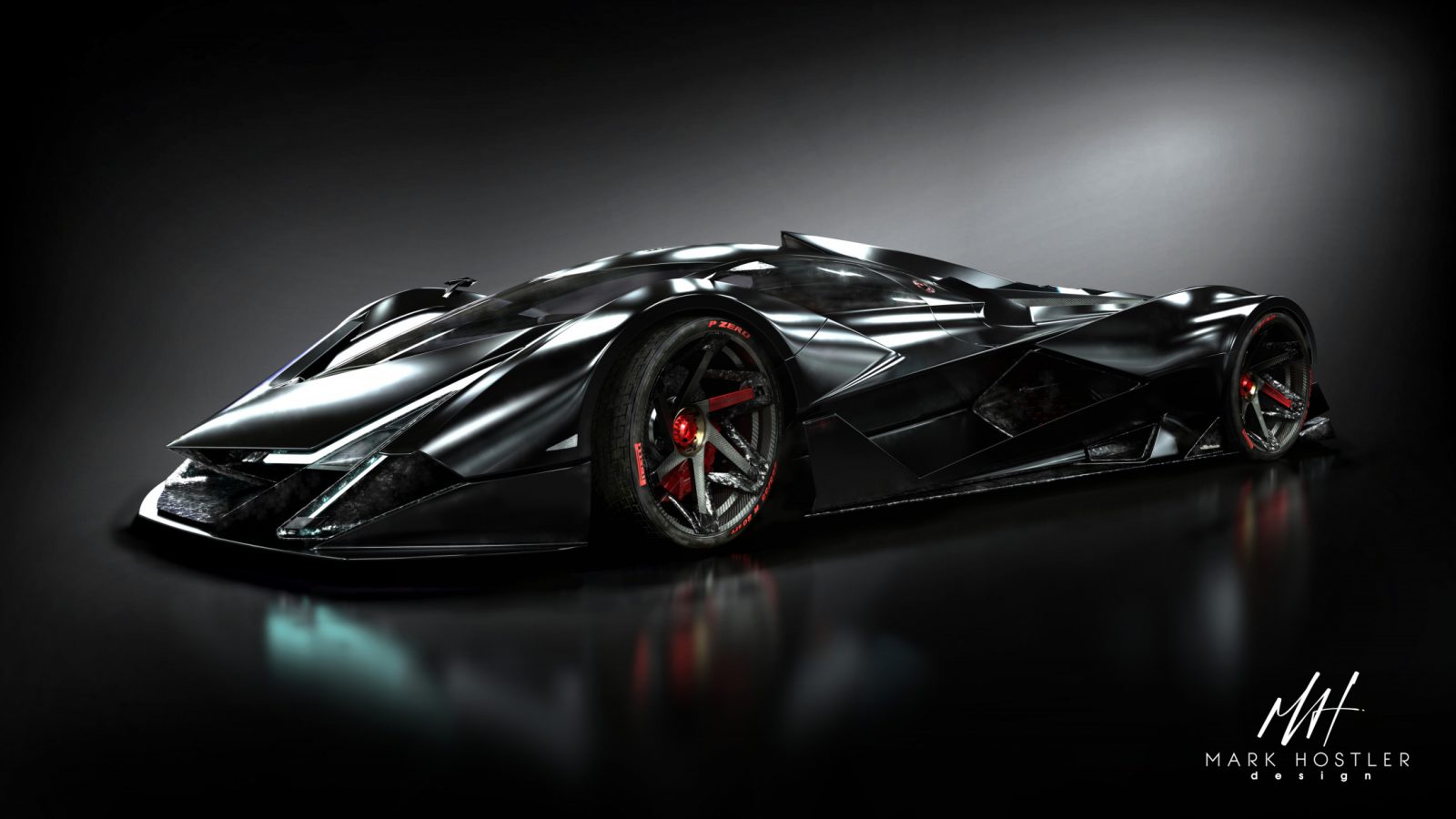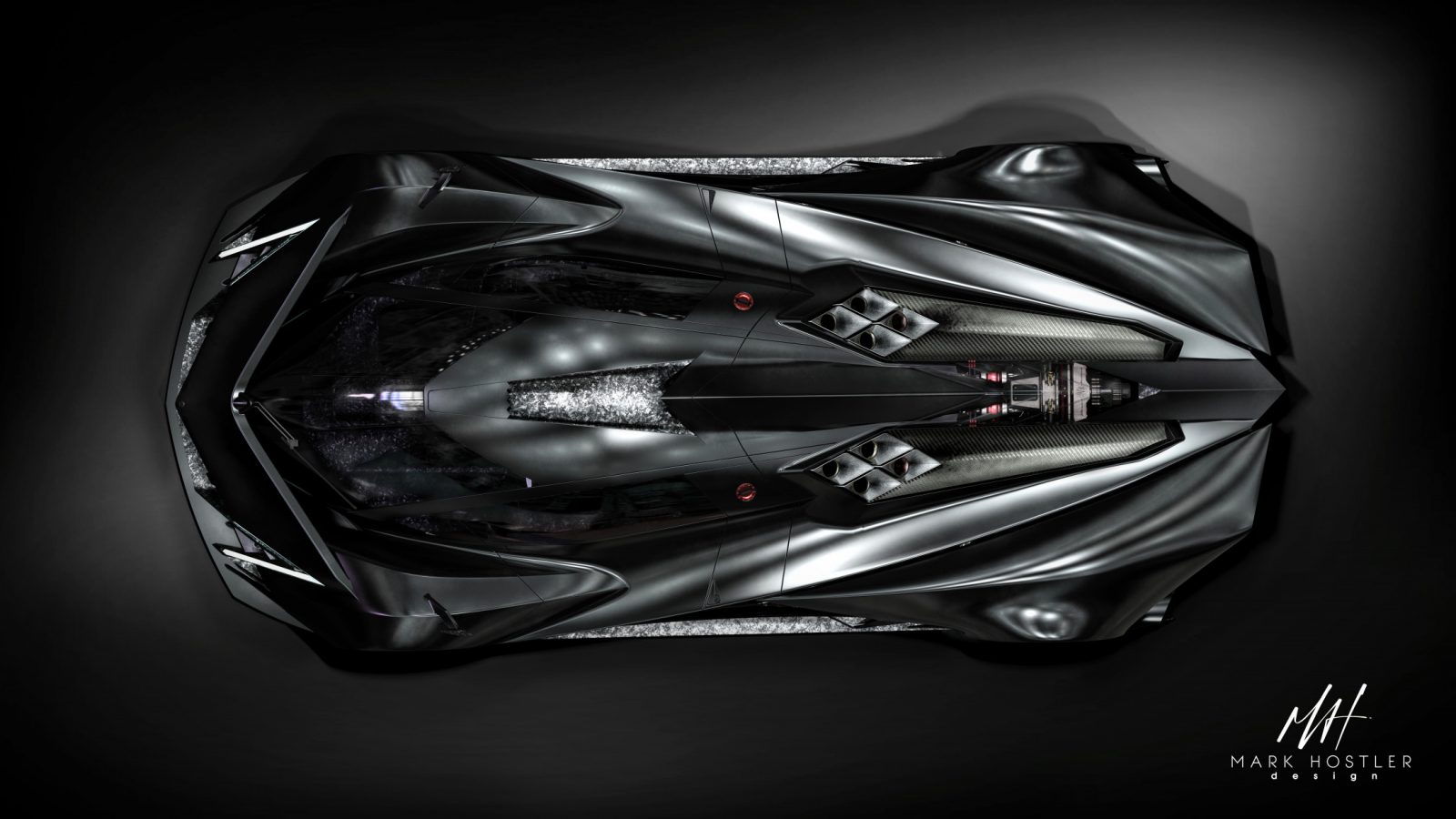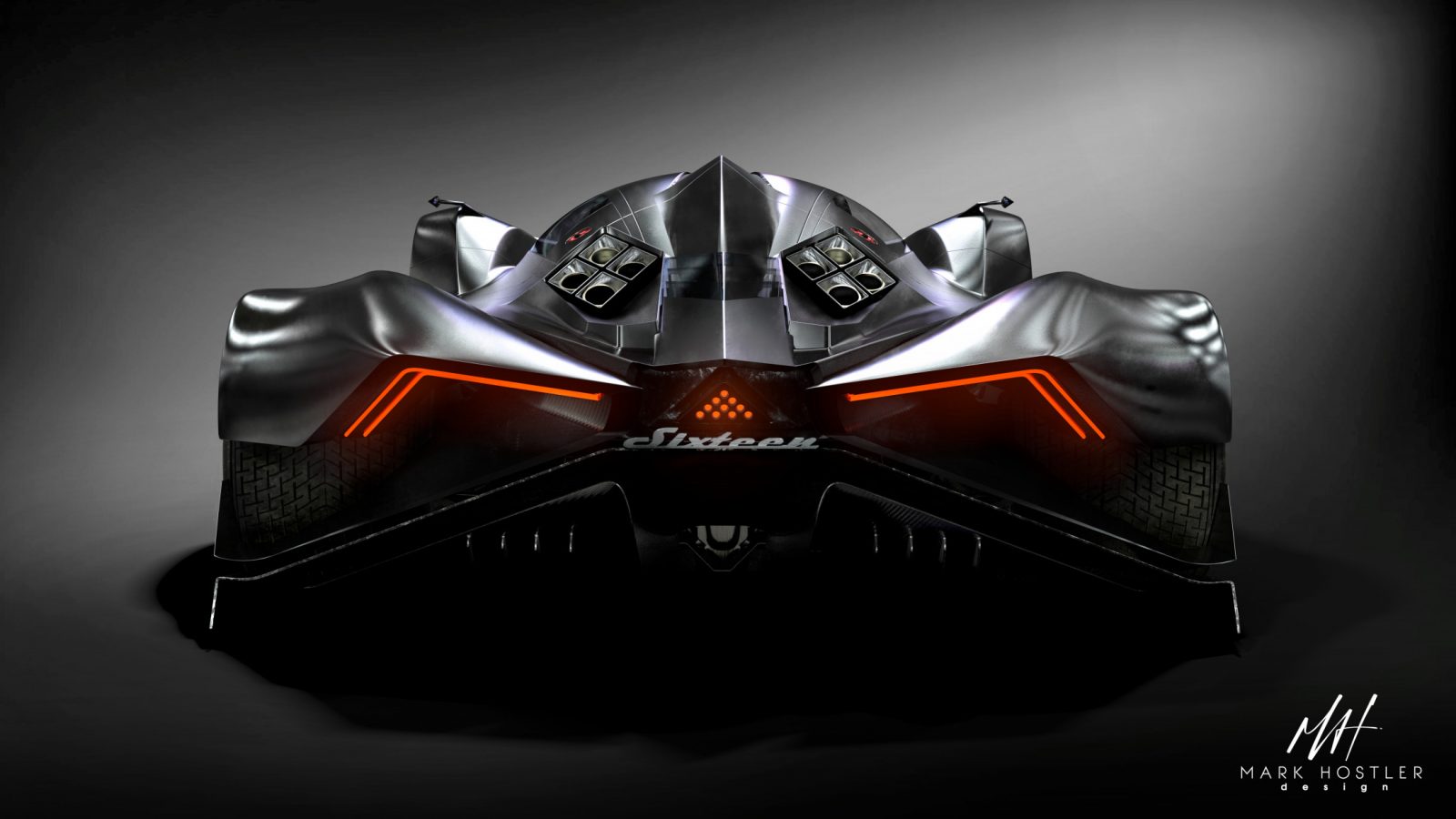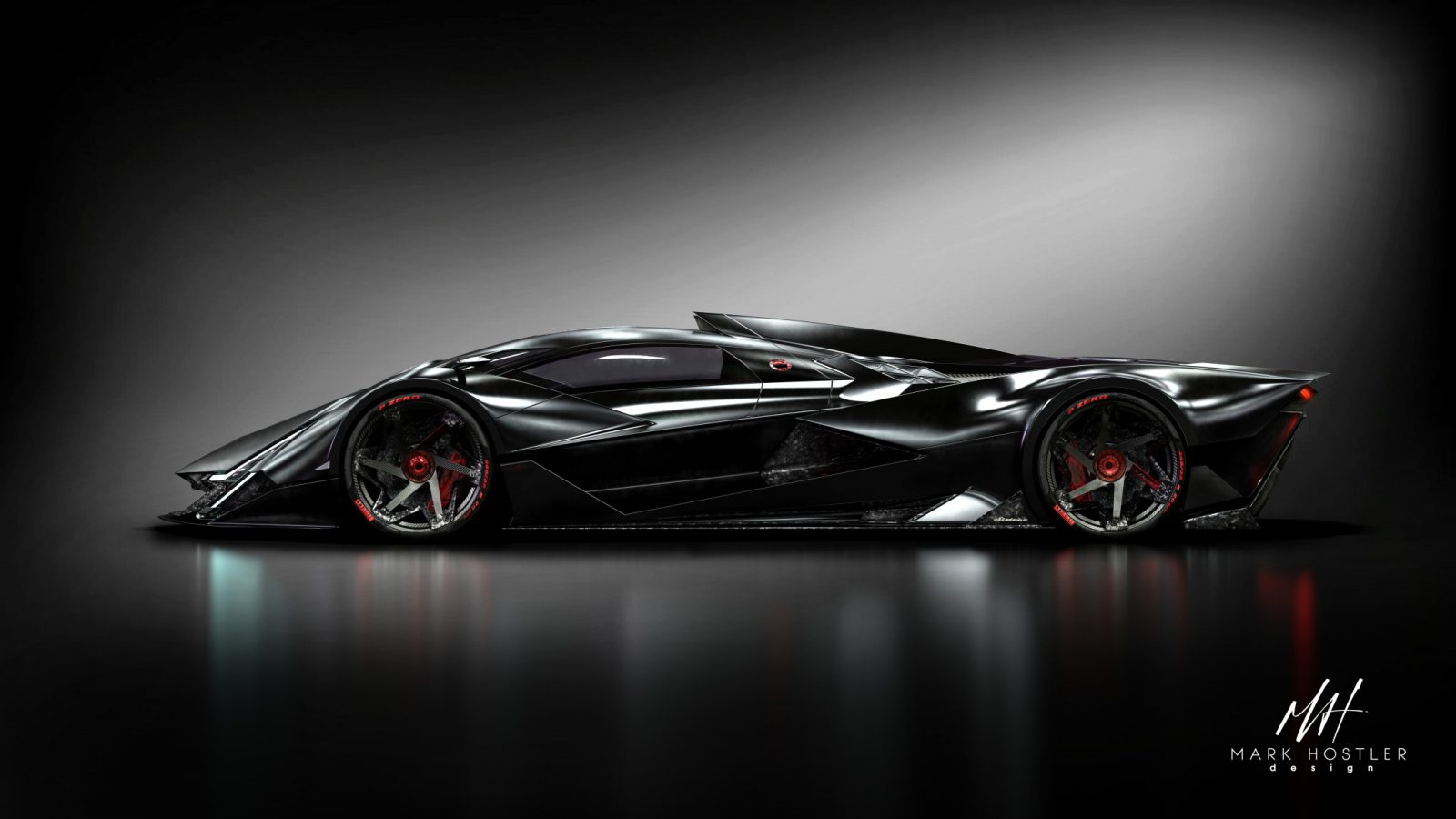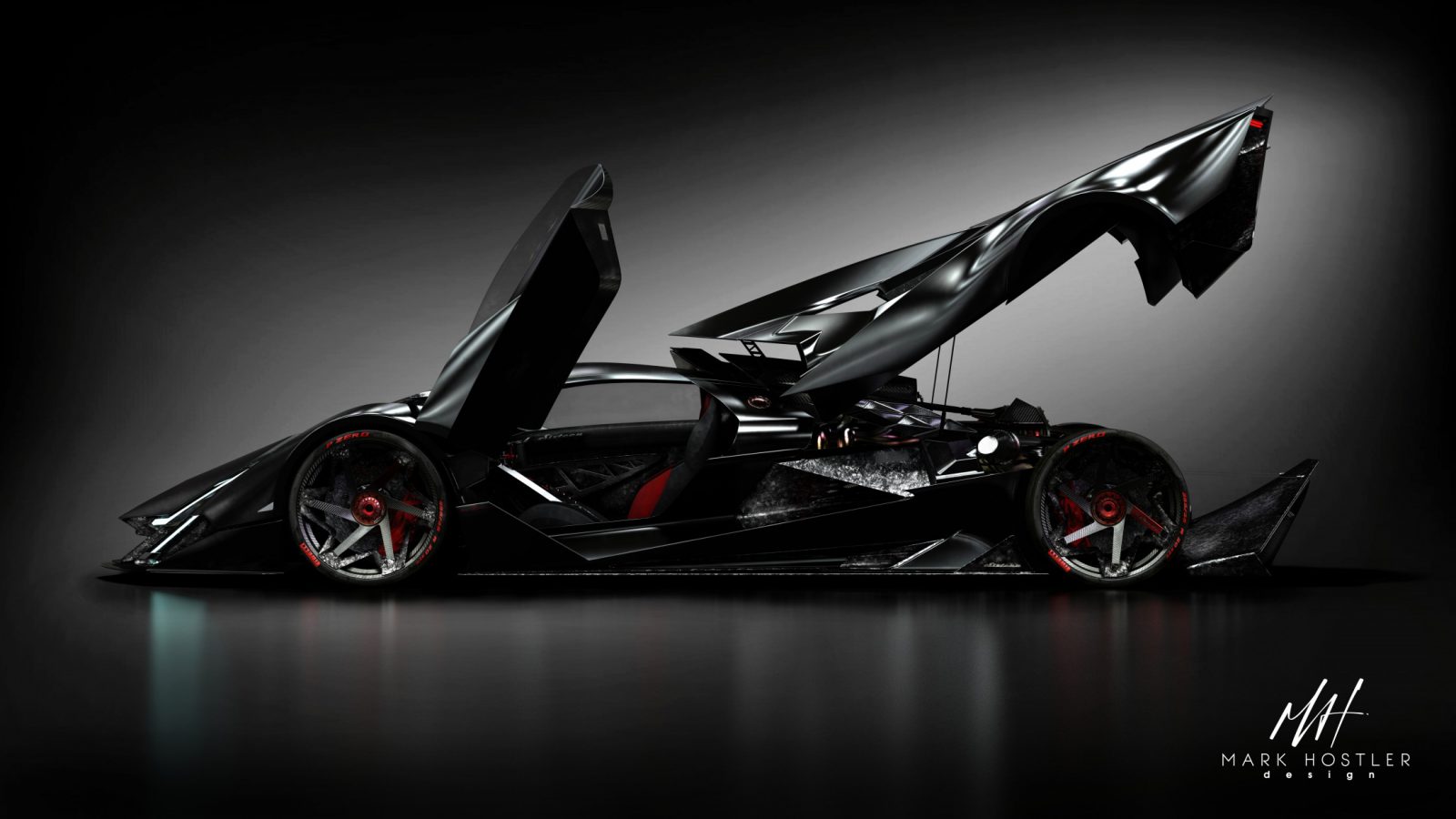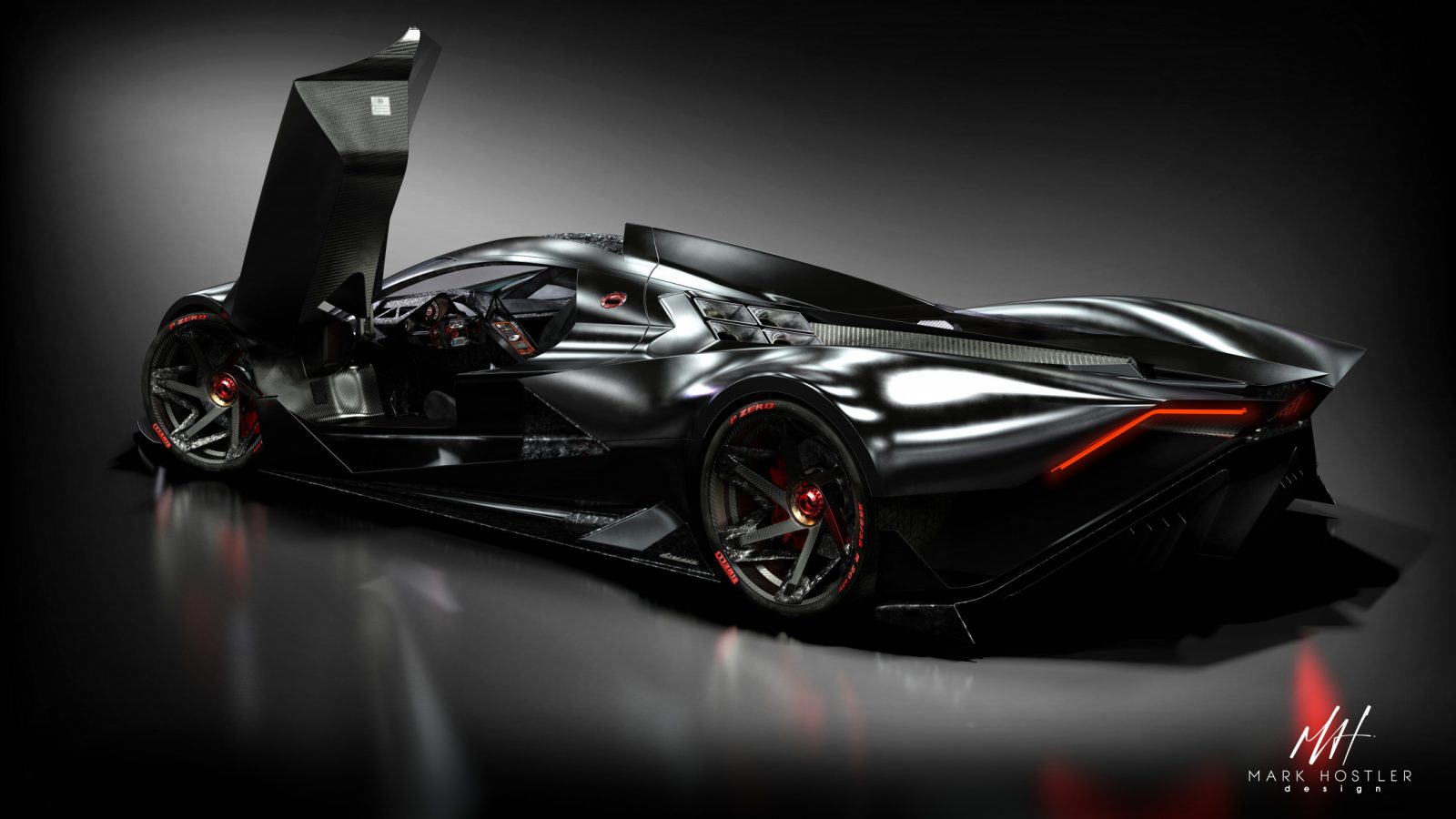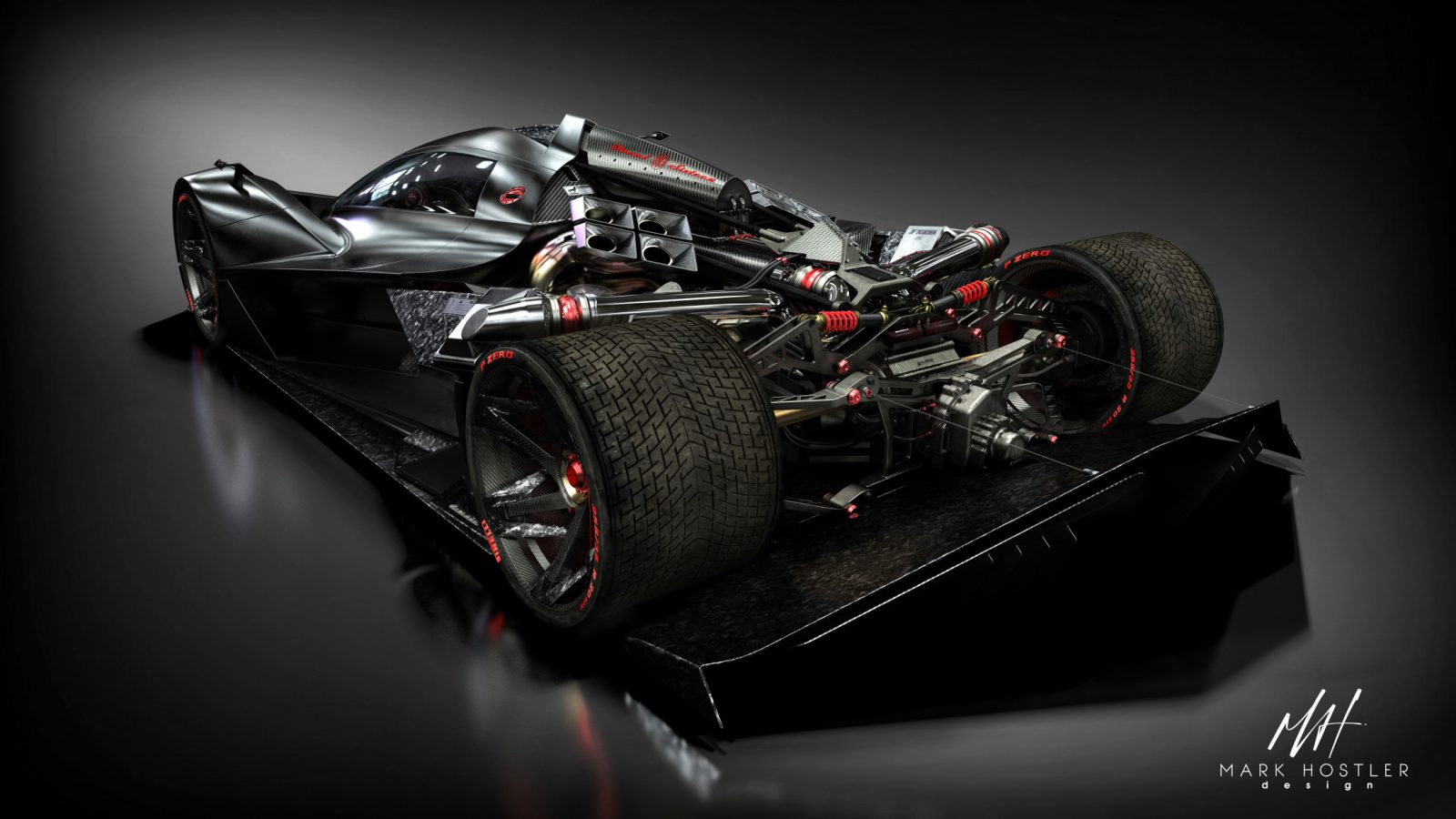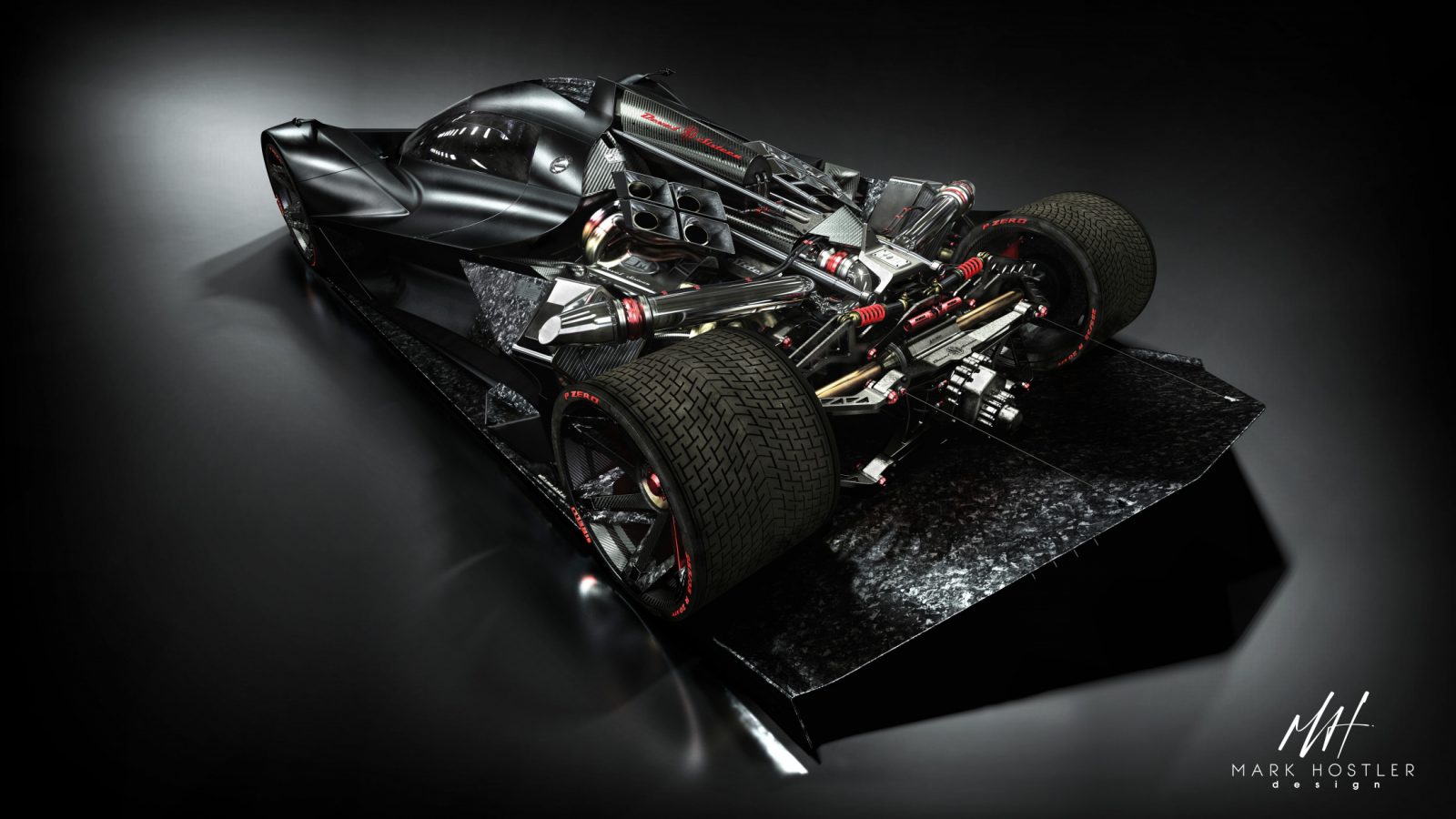The Devel Sixteen has been an automotive curiosity ever since Devel Motors first laid out the groundwork for the outrageous hypercar back in 2013 when it made its debut in prototype form at the Dubai Motor Show.
The idea of a 5,000 horsepower offering that could hit 320 mph seemed impossibly absurd even in a world where the Bugatti Chiron and the Ferrari LaFerrari roam the streets, but Devel has made sure to remind the world that the car is still a very real deal. When we last checked in with Devel, it was back in 2017, when the production series Sixteen made its global appearance once again using the backdrop of the Dubai Motor Show to make a statement.
The car has since retreated out of the spotlight, but that hasn’t stopped rendering artists from imagining what a fully production model would look like. This latest glimpse comes from Mark Holster a notable designer who has added his own visual style to the Sixteen, and it looks quite stunning.
Designed around the massive 12.3 liter quad turbocharged V16 engine that made its appearance in 2015, Holster’s Sixteen Concept III design builds upon the key structural elements of the past two Sixteen concepts, but tweaks the fighter jet aesthetic to add more high speed stability, as well as better cooling for the fore-mentioned V16 engine.
Mark also added more sharp angled surfaces to the car in an attempt to emulate those seen on modern stealth aircraft such as the F35 fighter jet. The extremely low roofline helps create a minimal low front cross section, which helps create low drag characteristics at high speeds. Mark also took a nod from the future, and the Sixteen III comes equipped with side mounted camera mirrors instead of traditional mirror assemblies in a bid to further reduce drag even further. A notable item here is that virtually all of the concept’s external aero pieces are made out of forged carbon fiber, with Mark intentionally leaving the carbon fiber unfinished to further enhance the unique texture and weave of the material. Carbon fiber also finds its way to the wheels which features specially constructed carbon fiber vanes to help channel air onto the carbon ceramic brakes.
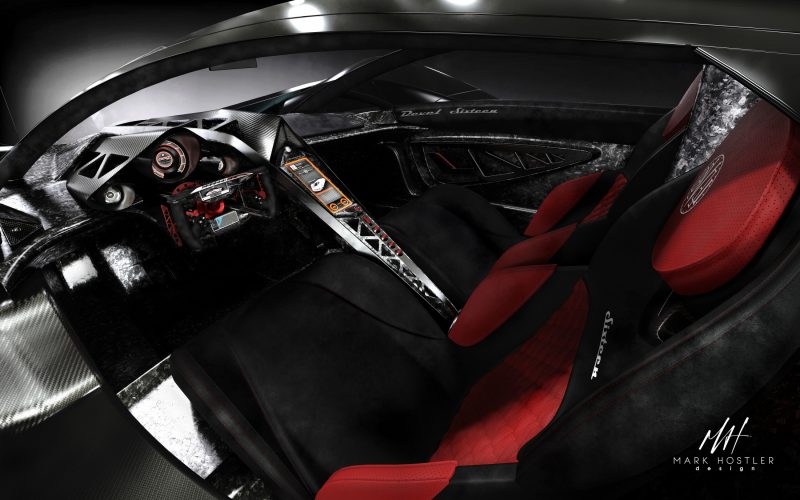
Meanwhile the interior of the Sixteen III was crafted to have more focus and purpose than its prior two real world predecessors, with minimalism being a prominent theme throughout. Forged carbon fiber accents are splashed throughout the interior, while minimal controls and supportive Alcantara seats drive home the performance focused intent of the car. Four buttons mounted on the center of the titanium center stack selects the gears, while steering wheel mounted paddles help with sequential shifting. Befitting a car as exotic as the Sixteen III, the dashboard features an all digital display with a skeletonized steering wheel made out of carbon fiber. The wheel itself features an integrated rev counter, and two auxiliary screens that show key vehicle information. The center stack also gets in on the act, with a massive 11-inch touchscreen infotainment system being added. Like other systems of this type, it controls functions such as navigation, climate, entertainment and other vehicle systems.
While chances are good that the Sixteen III will remain in the realm of fantasy, we think that Mark’s design does showcase the full potential of the Sixteen, and how far it could indeed go if Devel designers choose to adopt some of the features featured here in the rendering. We have included Mark’s write up on the design below, and you can check out more of his designs here.
“The Devel Sixteen III is a concept inspired by the Devel Sixteen concept supercar that was first revealed in 2013. The project was started Just before the Coronavirus Lockdown began and so has been a passion project in my free time.
Designed around Steve Morris Engines’ 12,500cc v16 Quad Turbocharged engine (showcased in 2015), the design of the new Devel sixteen III concept is an up to date re-imagining of the previous 2 iterations of the Sixteen, with a greater focus on cooling and high speed stability. The design language takes cues from the Fighter Jet inspired aesthetics of the previous 2 Devel concepts, but with more of a focus on sharp angled surfaces, such as those on modern stealth equipped warplanes like the F35. The extremely low roofline contributes to a minimal frontal cross section, allowing for a low drag coefficient. The design also features rear cameras instead of mirrors to further reduce drag, and an adjustable front splitter. The majority of the bodywork is finished in a satin metallic black, further tying the design to modern stealth aircraft, but with anodised bright red highlights in the filler cap, centre lock wheel nuts and wheel spokes.
The structural layout is based on the well-proven design formula of a carbon-fibre passenger cell, with front and rear subframes built from a combination of carbon, steel and aluminium. The car measures 5.3 Metres in length, even longer than the Mclaren speedtail, allowing for both the length of the v16 aluminium Block, Racing Transaxle transmission, and large front and rear overhangs to improve high speed aerodynamic stability and downforce. The structure features double wishbone pushrod-actuated adjustable suspension. Each bank of four cylinders has an individual exhaust manifold, feeding directly into each of the four 80mm turbochargers that pull air through four channels from the exposed vents in the side of the bodywork. The induction system features boost limiter valves to allow the driver to reduce the engine’s power output for improved ease of use.
The front, sides and roof of the car all feature extremely large air intakes, which feed air to engine cooling radiators and turbocharger intercoolers, situated above the engine, in the side pods, in front of the rear wheels and in the front section. Many of the externally visible components that make up the car’s aerodynamic elements are constructed from forged carbon composite, left unfinished to expose the unique texture of the material. This includes the massive rear diffuser, that features individual upper and lower sections to allow for adjustable down force.
The wheels are also constructed from carbon fibre and feature forged carbon vanes that pull cooling air over the carbon ceramic brake discs. The car also features 2 filler caps, one each side. These each feed into separate fuel tanks, a standard large size tank for regular pump gasoline, and a smaller auxiliary tank that is filled with e85 ethanol. A steering wheel switch allows for switching to the E85 tank and modifies engine ECU mapping and throttle response to give maximum performance on a drag strip.
Inside, the Sixteen III has a more focused interior than its predecessors. It features exposed forged carbon structures, minimal controls and alcantara seats. Four buttons on the titanium central spar select the automatic gears, with wheel mounted paddles for sequential control. The dashboard features digital dials, with the skeletonised carbon steering wheel featuring a rev counter and 2 auxiliary screens that display important vehicle information. In the centre console there is an 11 inch, high resolution screen that controls the navigation, climate, entertainment and other car systems.”
This design is Inspired by the Devel Sixteen, and is not affiliated with or endorsed by Devel Motors

Carl Malek has been an automotive journalist for over 10 years. First starting out as a freelance photographer before making the transition to writing during college, his work has appeared on numerous automotive forums as well as websites such as Autoshopper.com.
Carl is also a big fan of British vehicles with the bulk of his devotion going to the Morgan Motor Company as well as offerings from Lotus, MG, and Caterham. When he is not writing about automobiles, Carl enjoys spending time with his family and friends in the Metro Detroit area, as well as spending time with his adorable pets.

